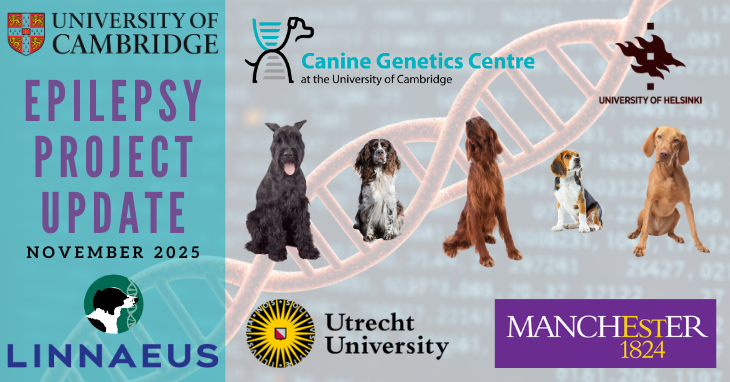
Our currently funded CGC Idiopathic Epilepsy (IE) project has now entered its final stage as we move towards the end of this year. As always, a huge thank you to everyone who has sent us swabs or completed our epilepsy questionnaire, especially those of you who have organised big batches of cheek swab DNA collection kits!
Through our analysis of the whole genome sequences that we generated for the five breeds in this project, and adding in those that we generated for our epilepsy research previously via the Give a Dog a Genome project, we have looked for potential IE risk variants in 44 IE cases of 15 breeds. For our five focus breeds we also generated whole genome sequences from control dogs as an additional analysis. This investigation has in total identified around 800 DNA variants that are currently being assessed in 1,000 dogs. These comprise the following:
- CGC case-control sets of five focus breeds (Beagle, English Springer Spaniel, Giant Schnauzer, Hungarian Vizsla and Irish Setter); archival and contemporary Italian Spinone case-control sets; and a smaller number of cases and controls from some of the additional single IE case breeds where samples were available
- Cases from University of Manchester epilepsy archive
- Case-control sets from University of Helsinki for the five focus breeds
- Case-controls sets from Utrecht University for the five focus breeds
We expect this dataset back very soon and it will be analysed and written up for publication next year, so do look out for further updates on our website.

Dr Sally Ricketts, who has led the CGC epilepsy team since its inception back at the Animal Health Trust, said: “I would like to send my heartfelt thanks to everyone who has supported our work over the years, from sending in samples from their dogs, to donating funds for our research, to publicising our study to their breed communities and inviting us to come and talk to you about our research and take part in your fundraising days. I’m so grateful for this support and hope that these research findings will be taken forward in years to come and that further progress will be made in our understanding, prevention and treatment of this debilitating disorder.”

